Filling the Gap: AMOLED and LCD from 2010 to 2012
by Joshua Ho on July 26, 2014 6:00 AM ESTSamsung Galaxy S2
The Galaxy S2 was and still is a great phone. In fact, it’s the only Galaxy S phone that ever shipped with an RGB strip AMOLED. Of course, this was necessary in order to have acceptable resolution for a 4.3” display without increasing resolution past WVGA. Just like the Desire HD, the resolution is still clearly quite poor on close examination, but the odd artifacting from PenTile is gone. This definitely helps with perceived sharpness and resolution. Unlike the Desire HD, the viewing angles are great. The RGB stripe also seems to result in almost no color shifting with viewing angle changes.
Unfortunately, it seems that peak luminance dropped significantly from the Galaxy S to the S2. Presumably this was due to the subpixel layout change, but even with the sunlight brightness boost feature the Galaxy S2 just isn’t as good as the Galaxy S in this regard. I recorded a maximum of 258.7 nits in movie mode and 282.2 nits in standard mode. Contrast is relatively similar and extremely high.
In standard mode, the Galaxy S2 isn't much better than the original Galaxy S. Definitely better, but barely. Far too much blue and green, far too little red, there's not much else to talk about here.
Turning on movie mode definitely helps quite a bit as evidenced by the significantly lower average error score. There's still too much blue and green, especially as we approach white, but it's far better than standard mode.
In the saturation sweep, Samsung has managed to outdo themselves in standard mode by regressing from the original Galaxy S. There's too much wrong with the calibration of this display to really pick at any particular issue in this mode.
Fortunately, movie mode tightens things up significantly, although blue is noticeably oversaturated, as is red, although to a lesser extent.
The same story can be seen in the ColorChecker for standard mode, with unacceptable inaccuracy. Many of the readings are outside of the gamut triangle entirely.
Things are much better with movie mode, but the result is still not the greatest. At this point, Samsung still has a ways to go before we get to the accurate AMOLED panels of today.


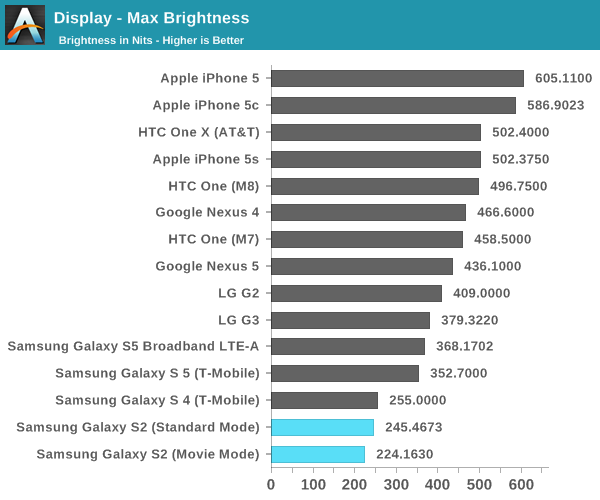
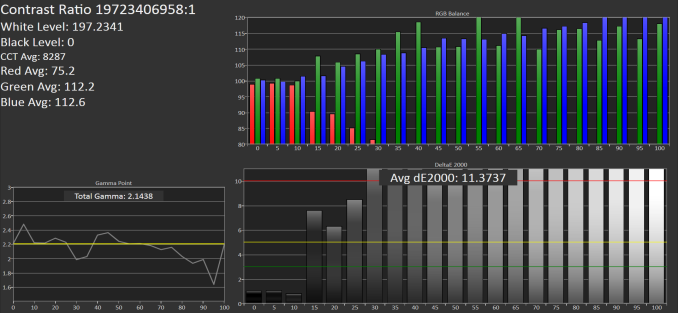
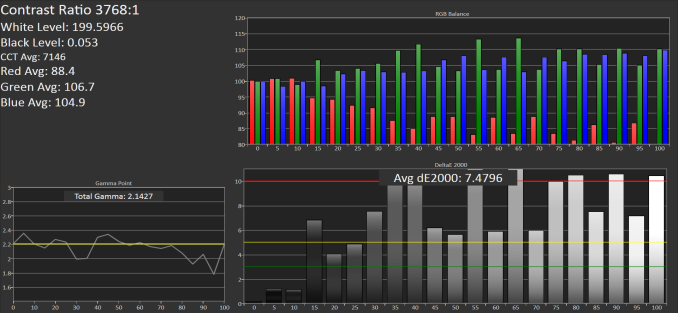


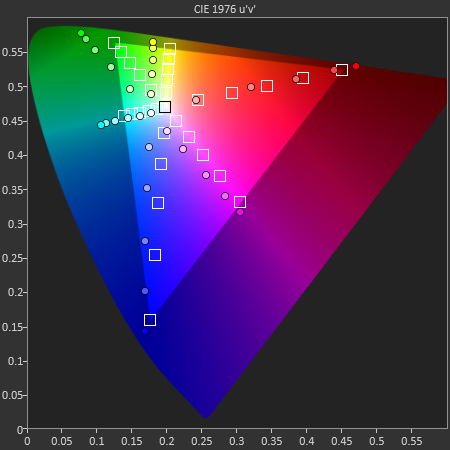
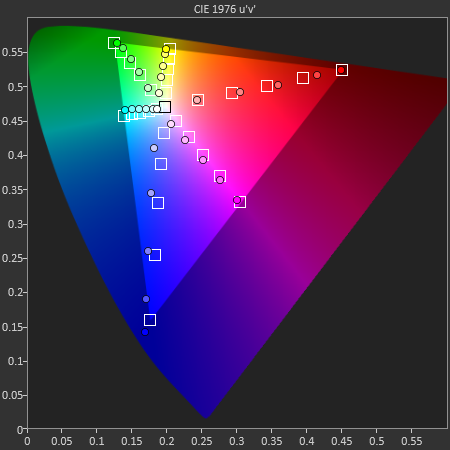
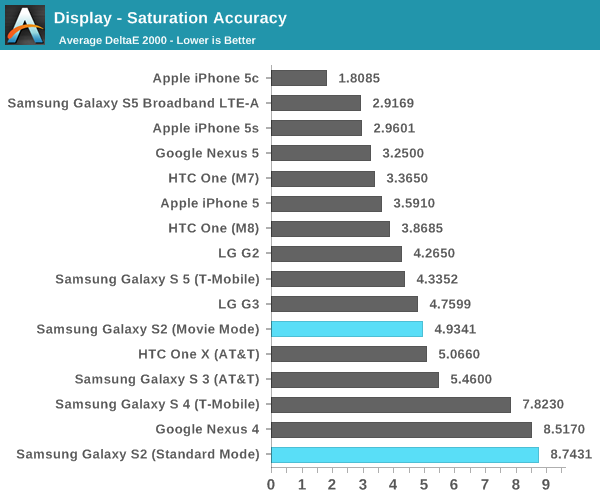
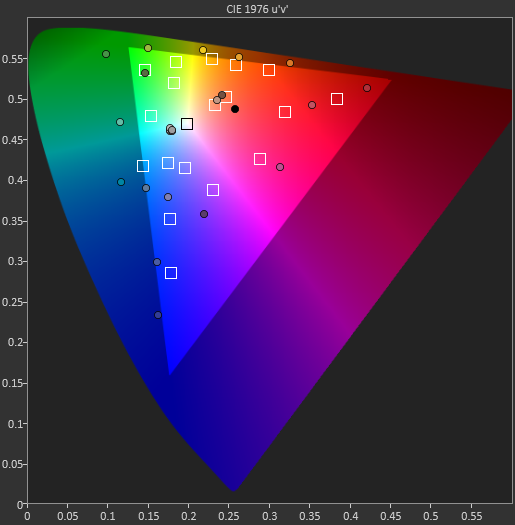
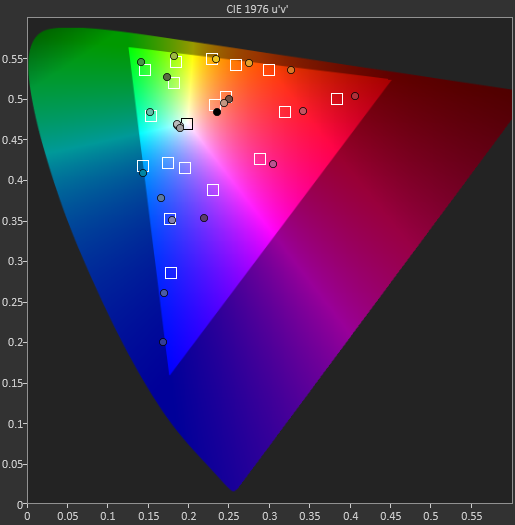









72 Comments
View All Comments
kokono - Monday, July 28, 2014 - link
I still have an Athlon64 X2, system with nForce chipset, still going strong,it would be nice to see some new tests..
Orenj - Saturday, July 26, 2014 - link
Having just retired my Rezound for an Xperia Z1 Compact (another 4.3" 720p--yay for phones that actually fit in your pocket!), I can vouch for the fact that the Rezound had a great display; the z1c, while generally good, is noticeably less accurate in color at brighter settings. Unfortunately, neither is bright enough to be usable outside in the sun here in Tucson... still waiting for fast color e-ink. Oh yeah, and the Rezound had atrocious battery life even when new; the z1c is a dream in comparison.scy1192 - Saturday, July 26, 2014 - link
Upgraded from the Rezound to the LG G3. With all the poo-pooing the display got I was worried it would be worse than my Rezound, but I'm glad that it turned out to be better all-around. It really did have a great display for the time.HangFire - Saturday, July 26, 2014 - link
Thank you for filling in the gaps, and yes some of us do care, maybe I'm just one of the 3.5 that do. Also I never realized HTC released a "Thunderbolt 2" (aka Rezound) wow it's a good thing they gave it more than one name. By November 2011 no one wanted anything to do with anything called Thunderbolt! I recall my original Tbolt had what seemed to be a very nice display, but could not compare to my better half's AMOLED in sunlight. That didn't bother me too much, but the battery life and lack of a modern Android O/S sure did. I wonder how it compares to the Rezound et al, but it's all academic now, at least my M7 rocks!SunLord - Sunday, July 27, 2014 - link
Unless these are basically never used phones wouldn't it be kinda pointless to test the screen on an Amoled display due to how they wear out after a few years?mkozakewich - Sunday, July 27, 2014 - link
Now that they're testing this, they can do an "after three years" test on models like the S3 or iPhone 5.I agree the tests on the older phones don't mean as much, but then, people aren't going out and buying them all that much, either. It's still important historical data about the progress of these technologies.
Icehawk - Sunday, July 27, 2014 - link
What was the point of this in 2014?HangFire - Monday, July 28, 2014 - link
The industry keeps telling us they're getting better, but it isn't always so.AnnonymousCoward - Monday, July 28, 2014 - link
Thanks for doing this review, so I can actually compare my current phone with the latest.Peichen - Tuesday, July 29, 2014 - link
Early Android phones are crap. Poor display, cheap build, laggy and small battery. The only thing keeping it afloat is the huge marketing budget.Android phone from the Spring 2013 cycle on are much better and closer to iPhone in general quality. Screens are on par with iPhone except color calibration. Build quality on some models improved a lot with better parts. Lag still there but mitigated with fast SOC. Battery life are on par except the phone have to be big to accommodate the big battery.